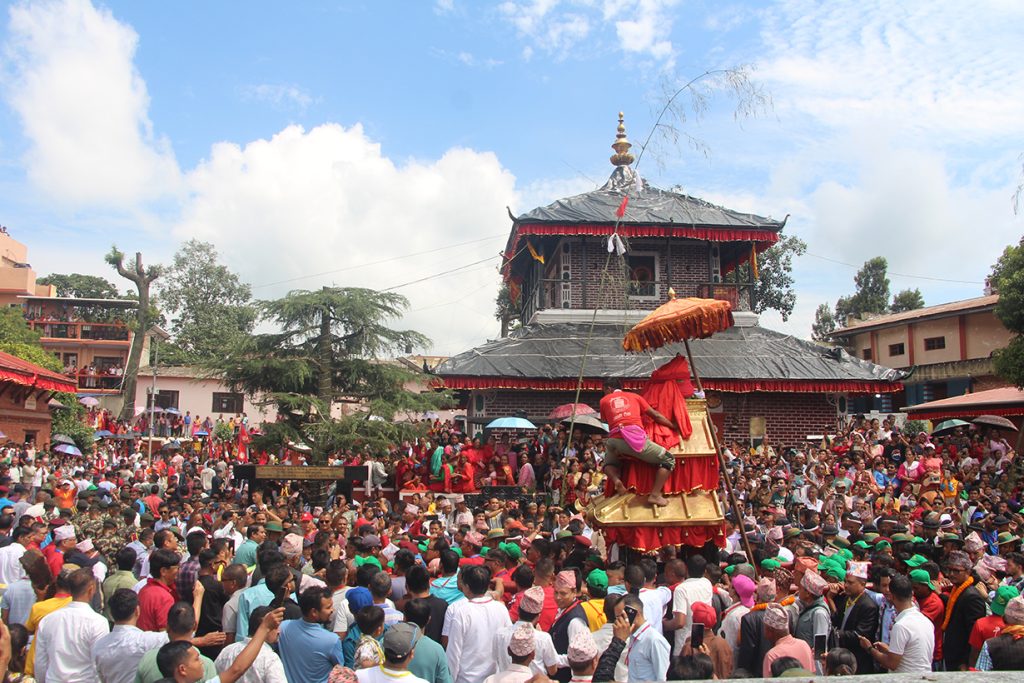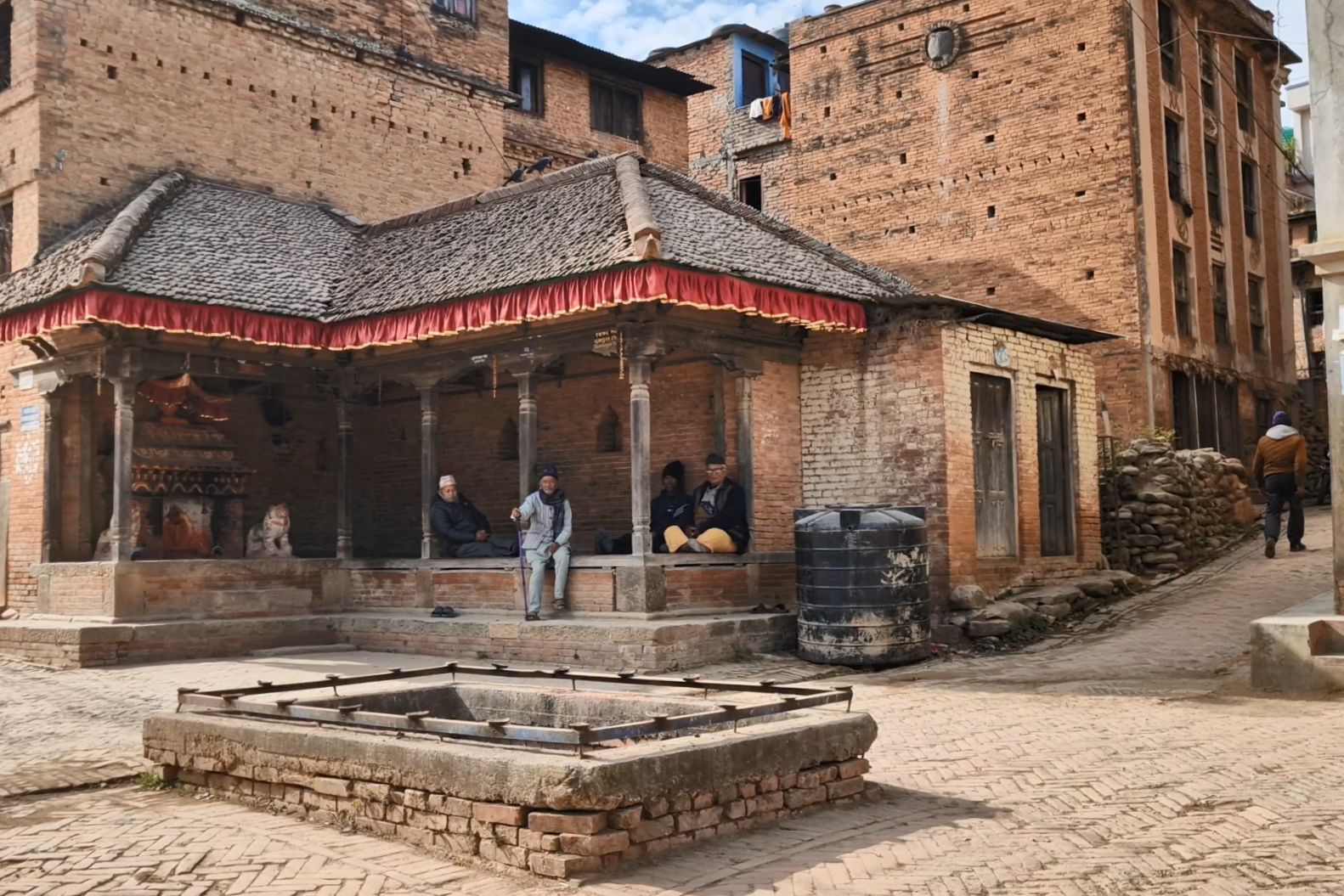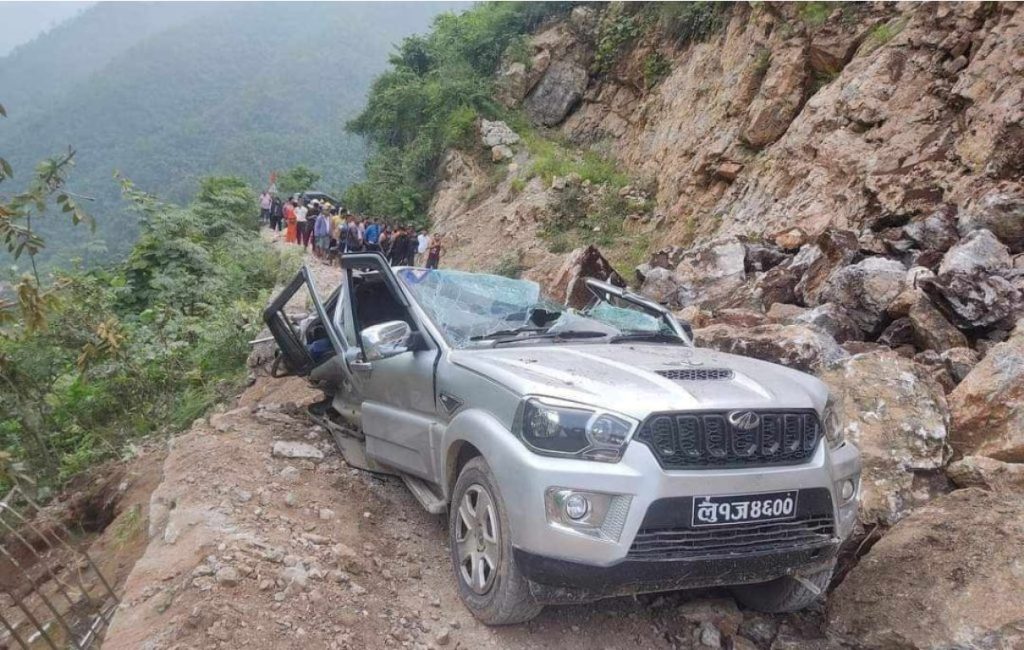
If you have ever mugged up general knowledge question-answers for a quiz contest or a ‘Loksewa’ exam, you will know which historical monument is called Nepal’s ‘Taj Mahal’. While millions of Nepalis have heard about the Rani Mahal in Palpa, only a small section of the population has visited the place.
Apparently, the century-old monument on the banks of the Kaligandaki, remained neglected since its supposed owner Khadga Shamsher Rana left the palace unattended in the first decade of the 20th century. Since then, the building’s fame existed in history and general knowledge books only. A few people have been visiting the monument, but the figures are nominal compared to its historical and aesthetic value.
Now, around 115 years after its construction, the monument has found a more dependable owner as the local government of Palpa district headquarters is planning to convert it into a museum.
The absence of owner for one century
According to history books, Prime Minister Bir Shamsher stripped his own brother and then commander-in-chief Khadga Shamsher of his royal status after finding that he was planning to remove the incumbent prime minister from the power, in 1887. As punishment, the government sent Khadga to Palpa, delegating restricted rights to rule the nearby districts.
After five years of his migration to Palpa, Khadga’s wife Tej Kumari Devi passed away. Perhaps Khadga had read the story of India’s Taj Mahal built by Shah Jahan in memory of his wife Mumtaz Mahal in the 17th century. The former commander-in-chief brought in skilled architects from India and spent five long years in building the Rani Mahal (which translates to ‘The Queen’s Palace).
In 1903, Khadga Shamsher was handed another punishment in the form of banishment from Nepal. He left the palace without handing over the property to anyone.

It took almost 100 years for the government to realise the historical significance of the monument. A signboard on the palace premises reads that many artifacts of the palace were lost for the want of a guardian. In the mid-2000s, the Department of Archaeology under the Ministry of Culture, Tourism and Civil Aviation renovated the building.
However, it could not retain the beauty in the absence of guarding staff again. Finally, the ministry handed over the ownership to the local government, Tansen Municipality, last year.
An ambitious future plan
The municipality’s mayor Ashok Kumar Shahi says the monument was unheard of for decades because no one really wanted to promote it. He claims the municipal government is now preparing to master plan to renovate the building again and turn it into a museum.
“Now, the central government has assigned us to look after the palace,” Shahi says, “We will finalise our master plan within a couple of months and begin the actual transformation.”

Shahi is also aware that many artifacts of the buildings including idols of the temples on the premises were stolen in the absence of guards. Locals have recovered some of the artifacts from suspected thieves whereas the district court has kept some of the goods in its custody after a case was filed about the ownership of the property.
Shahi says the municipality will bring all the artifacts and goods into its custody in order to exhibit at the museum. Likewise, the city government has recently contacted descendants of Khadga Shamsher and asked them to hand over photographs and clothes of Khadga Shamsher and his wife. The talks, however, are inconclusive and the municipality is not certain if the family agrees to cooperate. “If they do not give us the materials,” Shahi suggests an alternative plan, “We will replicate them on our cost.”
Shahi is not sure how long it will take to open the museum. “Modifying a historic building into a museum is vague for us,” he says, “But we hope the master plan will provide a guideline.” According to him, the Economic Policy Incubator programme led by the former vice-chairman of National Planning Commission, Shankar Sharma, is supporting the municipality to finalise the master plan free of cost.
Immediate needs
As Shahi says, it is a long way to go before the transformation. There are more immediate needs. The zinc roof of the building leaks. All doors and windows are open. Anyone can enter the building anytime.
The District Police Office has deployed four police personnel to the monument, but they cannot take care of it as they have been assigned to patrol three other villages in the surrounding. Chief of the DPO, SP Dipendra GC, says his office does not have any plan to improve the security system in the historic monument.

There is no one to clean up; visitors see bat scats scattered everywhere on the top floor. Therefore, the municipality is preparing to employ a cleaning staffer first. In a bid to collect funds for that internally, the city has begun collecting entrance fees from the visitors from August. “We hope to generate at least around Rs 700,000 per annum, which will be enough for us to hire a person,” Shahi says.
Likewise, the toilet on the premises is messy and the municipality wants to build a new one. It is also planning to make a garden outside the main building. As the palace originally has two ponds on the yard, the garden will add to the aesthetic value of the palace.
Before opening a museum, the municipality is planning to recolour the building. The current blue stripes were added inappropriately by the Department of Archaeology while renovating the building in the early 2000s, according to Shahi. “Historians say all the palaces during that time would have only one colour on the surface,” he says, “We will make the Rani Mahal all white again.” It will also be important as some visitors have dirtily scribbled their names on the wall as many people believe doing so would strengthen their love!
Recently, the DPO has installed a CCTV to monitor such ‘indecent’ activities on the premises. GC says that has been helpful for police to maintain peace and security, but not enough. He views that more of such surveillance tools should be added to the place, hoping the municipality will incorporate that also in the masterplan.

Another major challenge is the road. Rani Mahal is just 13 kilometre away from the central market area of Tansen, but people visiting Tansen are reluctant to go to the monument because of the bad road. The first half of the downward road is blacktopped; but the second half is muddy, bumpy, narrow and risky. Shahi says the Province 5 government has allocated Rs 65 million to blacktop the road within this fiscal year. “Tenders will be called for the blacktopping after the monsoon will be over,” he says.
“Come again, visit the place after Dashain” Shahi invites, “I don’t assure you that the monument will have got a facelift by then. But, you will surely see some symptoms of the changes that will take place soon.”
Dashain is just two months away. Are you ready to visit Nepal’s Taj Mahal in the festive vacation then?

























